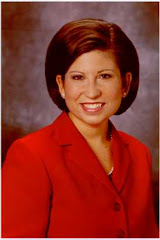“For over forty years, longer than the children of Israel wandered through the wilderness, we have been begging and praying and pleading for this act of justice. We shall someday be heeded, and when we shall have our amendment to the Constitution of the United States, everybody will think it was always so, just exactly as many young people believe that all the privileges, all the freedom, all the enjoyments which woman now possesses always were ‘hers. They have no idea of how every single inch of ground that she stands upon to-day has been gained by the hard work of some little handful of women of the past. (Anthony, 1881)
Delaware: the State That Could Have, but Did Not Make Women’s Suffrage History
Delaware: the State That Could Have, but Did Not Make Women’s Suffrage History
In 1920, women won the right to vote, but only after a long, hard fight. That long road to victory included the State of Delaware, which could have cast the deciding vote for ratification of the 19th Amendment to the U.S. Constitution and women’s suffrage. The fight for Women’s Rights in Delaware began before the voting issue gained momentum nationally.
Delaware has a long history of women fighting for equality and equity in the business, education, and communities, but in the end, women’s suffrage was not extended to women in Delaware. Tennessee became the 36th state to ratify the 19th Amendment and the women in Delaware and the rest of the states were finally enfranchised. Each time it was brought before the General Assembly the measure was squashed. It failed several times, each time amidst colorful and explosive debate.. Delawareans like their politics, are very passionate about it, they have no compunction to showing it. Quite often, it is the cause of much family distress and marriages have been split and created along party lines. Then and now, politics is the number one social activity throughout the state.
At the turn of the 19th Century, the advocates and the descanters of suffrage were strong, powerful, political women, educated, smart, and politically savvy. Delaware Republicans and Democrats for the most part supported women’s suffrage. However, a large voting block of Sussex County legislators were very conservative and they felt strongly that women were not smart enough and that their role was to serve and tend to their families. Politics was a man’s “sphere”. Each time the measure came up for a vote, these seven legislators would walk out of the Chamber and the issue died another death, until June 2, 1914 when it was delivered its final death knell (Timeline).
However, Selbyville Republican Governor John G. Townsend, R worked with the state’s U.S. Senator James H. Bayard, D, Wilmington to shepherd the legislation through their respective channels. Bayard, chairman of the very powerful U.S. Senate Judiciary Committee rescued the 19th Amendment from the Revolutionary Claims Committee, where he suspected it would languish and die. The RCC had been inactive for more than 30 years; it was established to handle compensation claims from the Revolutionary War.
“It is eminently proper that this subject should go to that committee because if there is any revolutionary claim in this country it is that of woman suffrage. [Laughter.] It revolutionizes society; it revolutionizes religion; it revolutionizes the constitution and laws; and it revolutionizes the opinions of those so old-fashioned among us as to believe that the legitimate and proper sphere of woman is the family circle as wife and mother and not as politician and voter-those of us who are proud to believe that, A woman’s noblest station is retreat; Her fairest virtues fly from public sight; Domestic worth--that shuns too strong a light. (Vest, 1881)”
Opponents of women’s suffrage in Delaware feared, “if woman suffrage is obtained, the worst class of the women of the country will rush to the polls and the best class will remain away by a large majority. They worried that white women would be embarrassed and could be soiled if they would get in the “boils” of dirty politics (Suffrage Battle in Delaware)
In 1896, women organized the Delaware Equal Suffrage Association, a statewide group affiliated with NAWSA, founded by Susan B. Anthony and Elizabeth Cady Stanton. The suffrage battle really began to heat up in Delaware in 1913. Failure to get the state legislature to pass a bill that would give women the right to vote made the state's small, but determined, group of suffragists determined to win public support that would force the General Assembly to approve the vote for women in 1915. “Street-corner rallies and parades soon came to be more important than club meetings and teas in women's homes for spreading the message. Up and down the state sped Florence Bayard Hilles's powerful automobile, dubbed the Votes for Women Flyer, bringing the suffrage message to towns and hamlets in all three counties.(Timeline)”
On Saturday, May 2, 1914, Delaware suffragists held what turned out to be their largest parade in Wilmington. More than 600 people marched, and thousands jammed the streets and hung out of windows to see the parade march by. Three grand marshals, Hilles representing New Castle County, Mary Slaughter representing Kent County, and Miriam Gray representing Sussex County, led the parade. They wore white dresses and the purple, yellow, and white sashes of the Congressional Union, a national woman's political organization, and each carried a yellow banner emblazoned with her county's name. There were bands, women, men, children, floats and automobiles divided into 12 sections or divisions. All of the women in-the parade except the college women wore white, while the men wore business suits. College women wore their caps and gowns. The homemakers section contained the most marchers, while African-American women marched in the Equal Suffrage Study Club.(Suffrage Battle in Delaware)
On Aug. 26, 1919, Annie Amiel spent the most time in jail. A worker in a leather factory in Wilmington, Annie Arniel was arrested eight times, spent 103 days in jail, and. when she was picketing Congress, she was knocked senseless by the police.
Time was running out for the 36th state to ratify the 19th Amendment, eventually President Wilson was forced due to political pressure and the negative publicity of the violence perpetuated against women protestors, to intervene. He urged Congress to pass the Susan B. Anthony Suffrage Amendment, which it finally did in June 1919 after long debates in both chambers. Delaware Representative Caleb R. Layton and Senator L. Heisler Ball voted for the amendment, while Josiah 0. Wolcott voted against it. Before the bill became law, 36th states had to ratify the amendment and they had 10 months to do so. If it failed, then the process would have to start over again. Delaware seemed the best bet for that last vote. The eyes of a nation were on Delaware from March to early June 1920.
Neither side was confident of victory, so both spared no effort in their attempt to influence legislators and their constituents. Both sides held parades and meetings in Dover and throughout the state, particularly in Sussex County, where the deciding votes lay. One of the largest rallies was held on the Dover Green, bands, decorated automobiles, and representatives from every town in Delaware turned out to help influence legislators. The pro-suffrage forces even resorted to dropping leaflets from airplanes to catch people's attention.
Lobbying pressure became intense. The president of the United States, Woodrow Wilson, put strong pressure on Democratic legislators, and the three du Pont cousins urged ratification of the amendment, their first agreement on anything since their acrimonious business split. Finally exhausted from months of lobbying pressure, the members of the House of Representatives agreed to bring the session to close on a set day, whether or not the suffrage bill came forward for a vote. On May 5, the Delaware Senate ratified the Anthony Amendment by a vote of 11 to 6. Woman suffrage stood just eighteen House votes away from victory.
The Speaker of the House was kidnapped just before the vote, he was held in the basement of a tavern on the other side of the Legislative Green, and released when the House adjourned without voting. The House adjourned without formally voting because it had become clear that there were not enough votes for passage. The anti-suffragists rejoiced, and Mrs. Thompson was lifted aloft in a chair. While Delaware was not the “first state” to ratify the Constitution, the last state necessary to complete the enfranchisement of the American people, the effort in Delaware ended with a whimper instead of a bang (Historical Society).
The victory came in Tennessee, where by the margin of just one vote, a young man ensured all women the right to vote in honor of his mother. Just as his vote was being cast, a young legislator, who supported the anti-suffrage movement and proudly wore a red rose in his lapel to identify him as an “anti”, received an urgent cable from his mother. Her few words and his respect for his mother, changed the course of history. She reminded him “not to forget the ladies” and to vote FOR women’s suffrage. He did and to the dismay and anger of his colleagues, he had to escape on the ledge out of the window to get away from an angry mob.
Delaware Women's Suffrage Timeline. (1915, May). Retrieved July 1, 2009, from The Suffrage Battle in Delaware: http://www.hsd.org/Women_Suffrage_TimeLine.htm
Elizabeth Cady Stanton and Susan B. Anthony Project. (2009, Jun2). Retrieved July 13, 2009, from Rutgers University: http://ecssba.rutgers.edu/index.html
Stanton, E. C. (1881). Delaware (Section). In E. C. Susan B. Anthony, History of Woman Suffrage. Louisville, KY, USA: Rare Books on CD, Book of Wisdom.
The Suffrage Battle in Delaware. (1915, January). Retrieved July 1, 2009, from Historical Society of Delaware: http://www.hsd.org/Woman_SuffragistBattleinDE.htm
Vest, M. S. (1881, December 12). Speech on Senate Floor. History of Woman Suffrage . Washington, D.C., USA: Book of Wisdom.
Women's Suffrage in Delaware. (1915, May 1). Retrieved July 1, 2009, from Historical Society of Delaware: http://search.dca.net/cgi-bin/htsearch











No comments:
Post a Comment